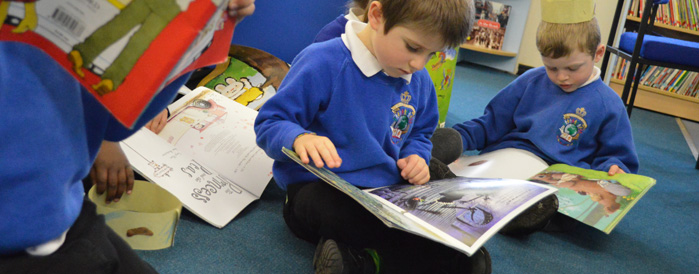Reading is one of the most important skills a child will master at school.
Synthetic phonics is a way of teaching reading. Children are taught to read letters or groups of letters by saying the sound(s) they represent. Children can then start to read words by blending (synthesising) the sounds together to make a word. We follow a systematic approach where each grapheme is introduced clearly; a focus is placed on blending to read and segmenting to spell. This focus provides children with the skills they need to begin to read words, captions and whole sentences as soon as possible.
The teaching of phonics begins in Foundation Stage using The Little Wandle Scheme when the children start school. This is a systematic, synthetic phonics set up which has been recognised by the Department of Education.
Little Wandle Letters and Sounds Revised also draws on the latest research into how children learn best; how to ensure learning stays in children’s long term memory and how best to enable children to apply their learning to become highly competent readers. The programme enables children to see the relationship between reading and spelling, meaning they learn to blend and segment words successfully.
The programme provides opportunities for:
- direct teaching in frequent, short bursts
- consistency of approach
- secure, systematic progression in phonics learning
- maintaining pace of learning
- providing repeated practice
- application of phonics using matched decodable books
- A useful website to support phonics is Little Wandle for Parents
Phonics Terminology
During phonics at Robert Le Kyng, we discuss the following terminology:
Phoneme: the smallest unit of sound in speech
Grapheme: how a phoneme is written down
Digraph: these are two letters that make a single sound e.g. ar, ee, ou, oy
Trigraphs: these are three letters that make a single sound e.g. igh, str
Segmenting: where you break each word into its separate phoneme, for example ‘chop’ has 3 phonemes, ch/o/p.
Blending: putting sounds back together to form a word
Some words in the English language cannot be broken down into separate phonemes. These words are known as tricky words and we teach the children to be able to read and know the whole word, for example, ‘said’ or ‘what’.


